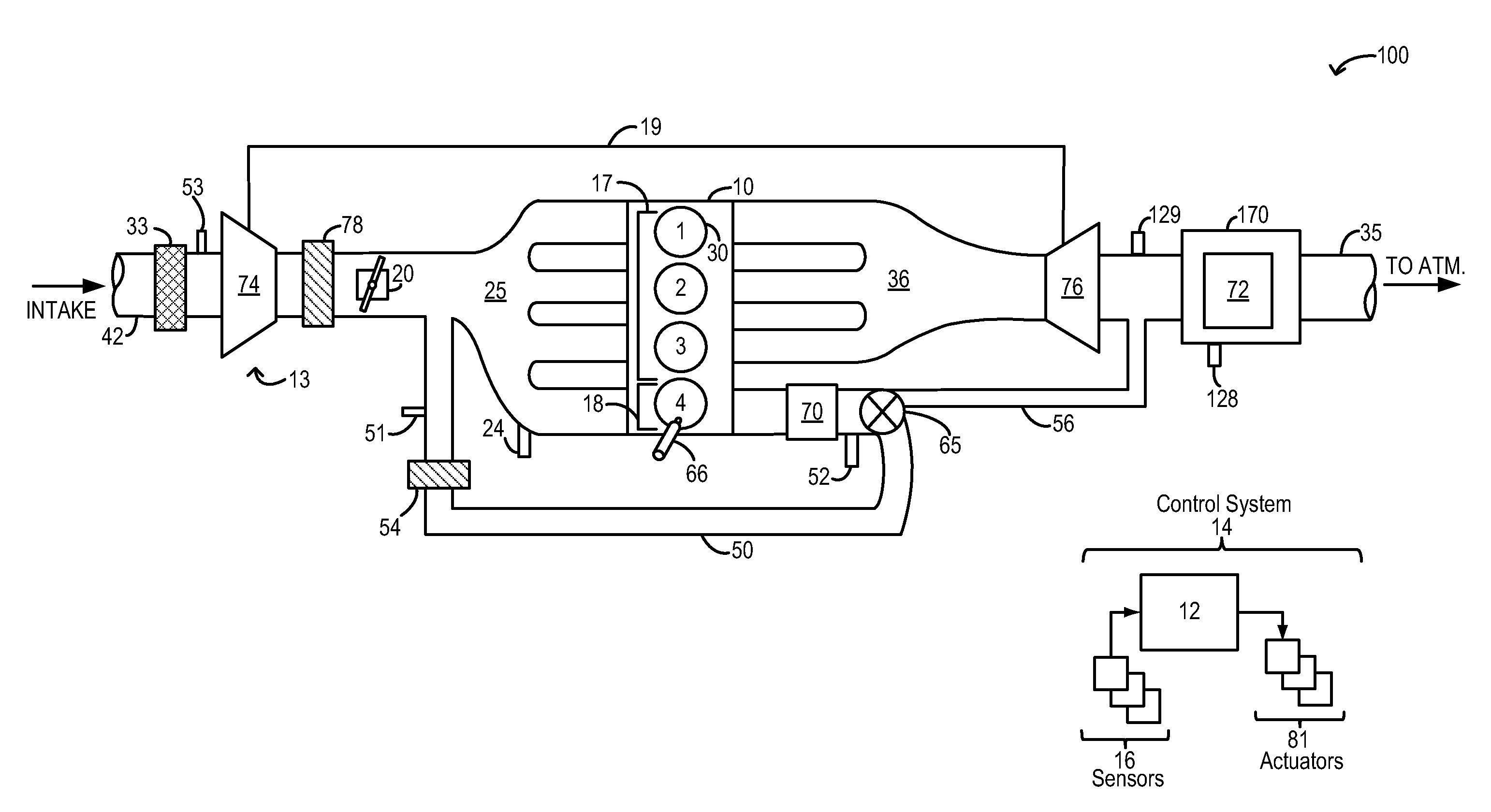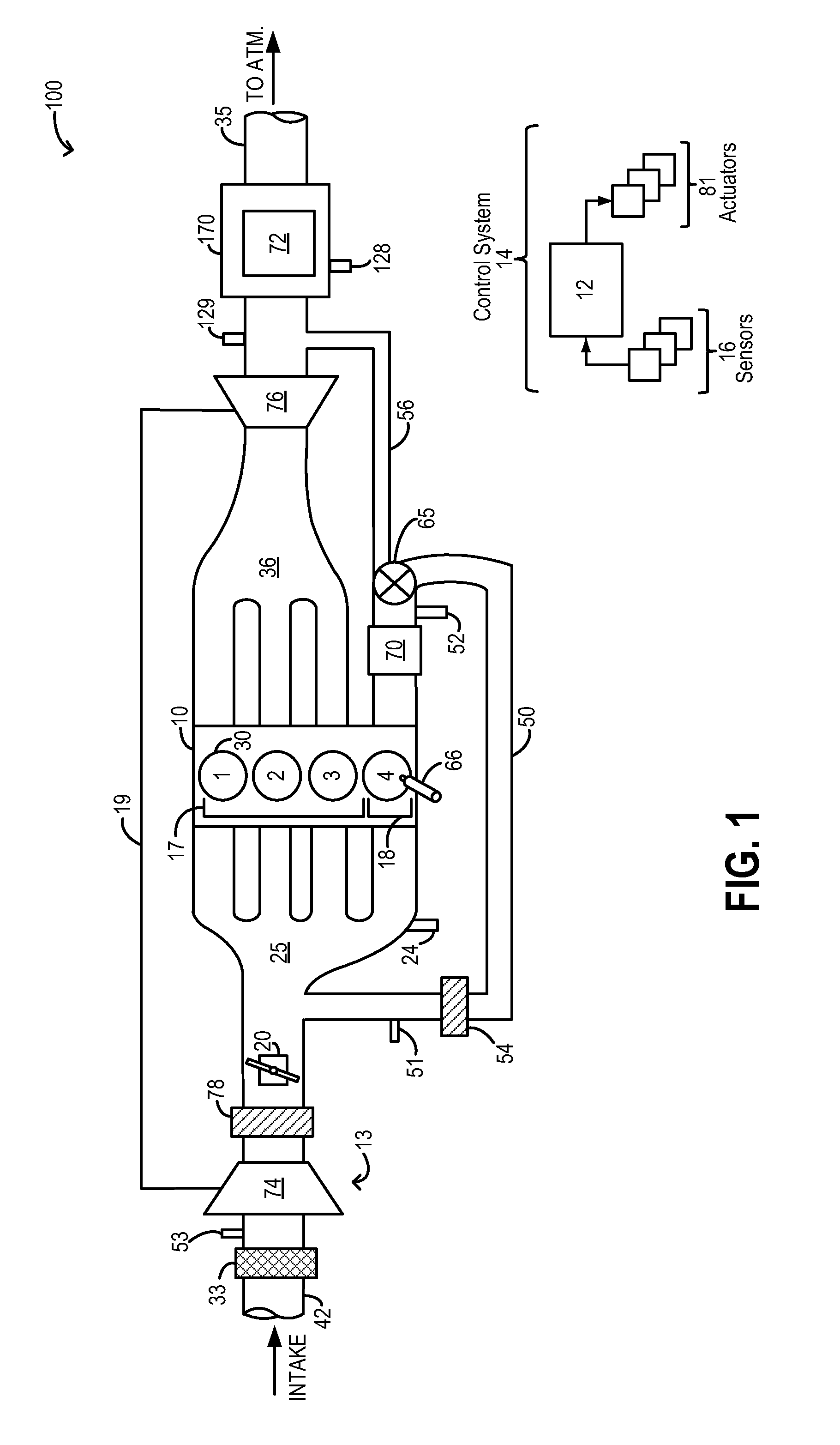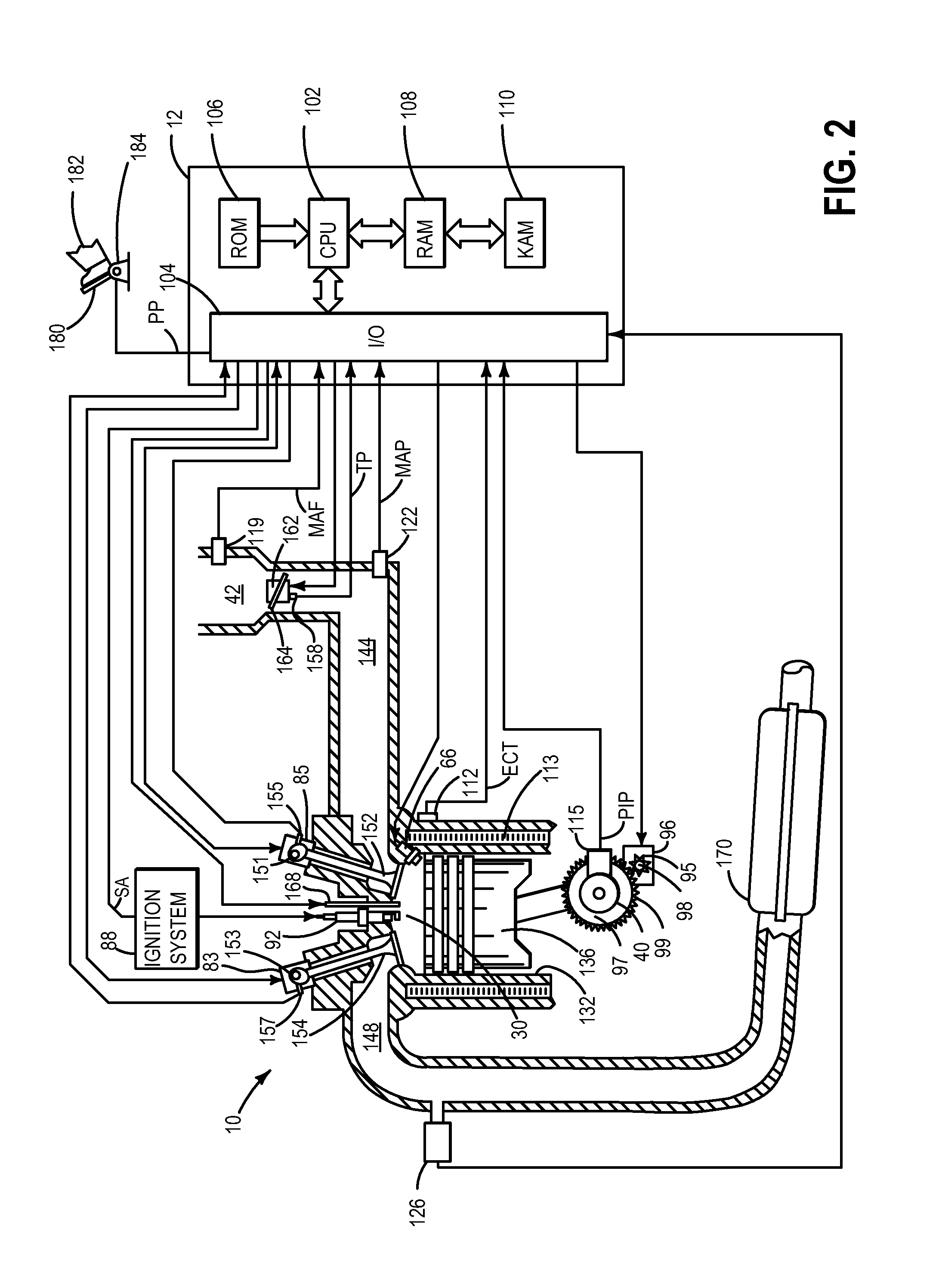Systems and methods for exhaust catalyst temperature control
a technology of catalyst temperature control and system, applied in the direction of electrical control, machine/engine, electric control of exhaust treatment, etc., can solve the problems of reducing fuel economy, throttling losses, in-cylinder heat loss, engine knock, etc., to reduce engine knock, nox emissions, and fuel economy. improve, the effect of reducing the level of engine boos
- Summary
- Abstract
- Description
- Claims
- Application Information
AI Technical Summary
Benefits of technology
Problems solved by technology
Method used
Image
Examples
Embodiment Construction
[0013]The present description is related to exhaust catalyst temperature control on an engine operating with highly diluted cylinder mixtures, such as the engine systems of FIGS. 1-2, wherein exhaust from a dedicated cylinder group is used to provide external EGR to the engine. A controller may be configured to perform a control routine, such as the routine of FIG. 3 to continually vary a proportion of exhaust diverted from the dedicated cylinder group to an exhaust catalyst, while bypassing remaining engine cylinders, relative to exhaust recirculated to the engine intake, based on catalyst temperature. In doing so, the exhaust catalyst can be maintained above an operational temperature while EGR is delivered. An example adjustment for exhaust catalyst temperature control during engine operation, including during and after an engine cold-start, is shown with reference to FIG. 4.
[0014]FIG. 1 schematically shows aspects an example engine system 100 including an engine 10 with four cyl...
PUM
 Login to View More
Login to View More Abstract
Description
Claims
Application Information
 Login to View More
Login to View More - R&D
- Intellectual Property
- Life Sciences
- Materials
- Tech Scout
- Unparalleled Data Quality
- Higher Quality Content
- 60% Fewer Hallucinations
Browse by: Latest US Patents, China's latest patents, Technical Efficacy Thesaurus, Application Domain, Technology Topic, Popular Technical Reports.
© 2025 PatSnap. All rights reserved.Legal|Privacy policy|Modern Slavery Act Transparency Statement|Sitemap|About US| Contact US: help@patsnap.com



